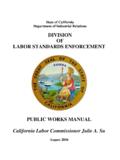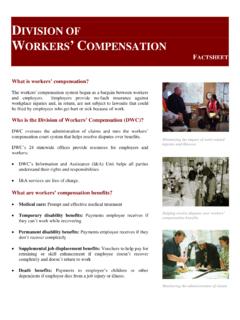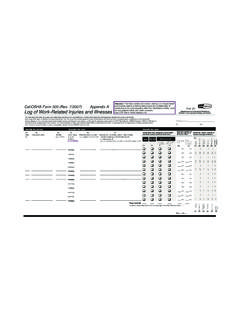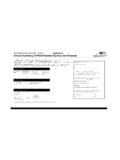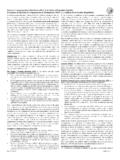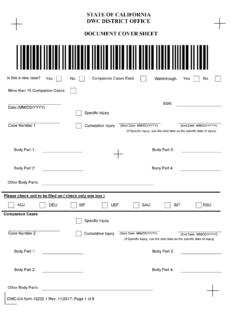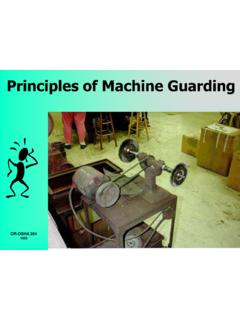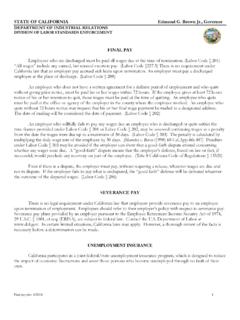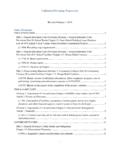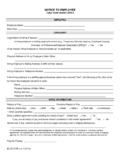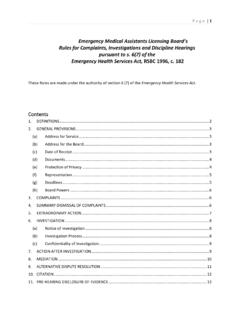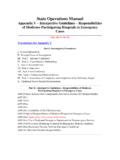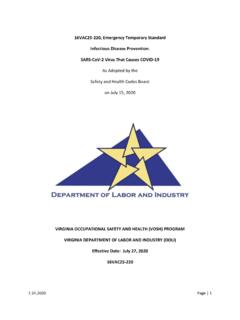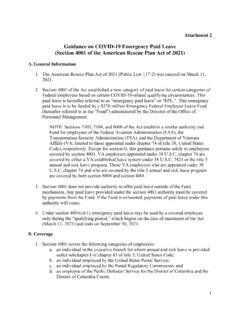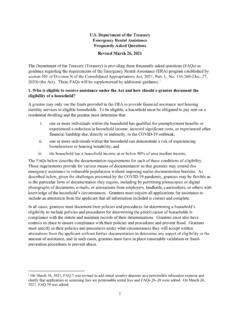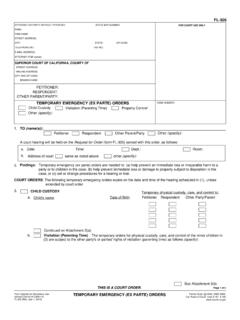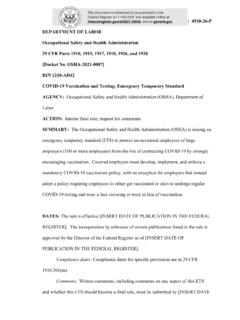Transcription of COVID-19 Prevention Emergency Temporary Standards …
1 COVID-19 Prevention Emergency Temporary Standards What Employers Need to Know About the June 18 Standards June 21, 2021 On June 17, the Occupational Safety and Health Standards Board readopted the revised Cal/OSHA COVID-19 Prevention Emergency Temporary Standards . These Standards incorporate the latest CDPH guidance on face coverings and eliminate physical distancing requirements except for certain employees during outbreaks. Following the vote, Governor Gavin Newsom signed an executive order to allow the revisions to immediately take effect on June 17. The Emergency Standards apply to most workers in California not covered by the Aerosol Transmissible Diseases standard. Important changes to the COVID-19 Emergency Temporary Standards effective June 18 include: Fully vaccinated employees do not need to be offered testing or excluded from work afterclose contact unless they have COVID-19 symptoms. Fully vaccinated employees do not need to wear face coverings except for certain situationsduring outbreaks and in settings where CDPH requires all persons to wear them.
2 Employersmust document the vaccination status of fully vaccinated employees if they do not wear facecoverings indoors. Employees are not required to wear face coverings when outdoors regardless of vaccinationstatus except for certain employees during outbreaks. Employees are explicitly allowed to wear a face covering without fear of retaliation fromemployers. Physical distancing requirements have been eliminated except where an employerdetermines there is a hazard and for certain employees during major outbreaks. Employees who are not fully vaccinated may request respirators for voluntary use from theiremployers at no cost and without fear of retaliation from their employers. Employees who are not fully vaccinated and exhibit COVID-19 symptoms must be offeredtesting by their employer. Employer-provided housing and transportation are exempt from the regulations where allemployees are fully vaccinated. Employers must review the Interim guidance for Ventilation, Filtration, and Air Quality inIndoor Environments.
3 Employers must evaluate ventilation systems to maximize outdoor air and increase filtrationefficiency, and evaluate the use of additional air cleaning important requirements from the November 2020 COVID-19 Emergency Temporary Standards that remain in the June 18 Standards : Employers must establish, implement, and maintain an effective written COVID-19 California Department of Industrial Relations Division of Occupational Safety & Health (continued on next page) Prevention Program that includes: oIdentifying and evaluating employee exposures to COVID-19 health effective policies and procedures to correct unsafe and adequate time for handwashing and cleaning frequently touched surfaces andobjects. Employers must provide effective training and instruction to employees on how COVID-19 isspread, infection Prevention techniques, and information regarding COVID-19 -relatedbenefits that affected employees may be entitled to under applicable federal, state, or locallaws. Employers must exclude employees who have COVID-19 symptoms and/or are not fullyvaccinated and have had a close contact from the workplace and, if that close contact iswork related, ensure continued there are multiple COVID-19 infections and COVID-19 outbreaks Employers must follow the requirements for testing and notifying public health departments of workplace outbreaks (three or more cases in an exposed workgroup in a 14-day period) and major outbreaks (20 or more cases within a 30-day period).
4 During any outbreak, face coverings are required regardless of employee vaccination status: 1) indoors and 2) outdoors when employees are less than six feet from another person. During major outbreaks, six-feet physical distancing is required where feasible, both indoors and outdoors. COVID-19 testing for employees who are not fully vaccinated and might have been exposed Requires employers to offer COVID-19 testing at no cost during paid time to their employees who are not fully vaccinated and had potential exposure to COVID-19 in the workplace, and provide them with information on benefits. Notification requirements to the local health department Employers must contact the local health department immediately but no longer than 48 hours after learning of three or more COVID-19 cases to obtain guidance on preventing the further spread of COVID-19 within their workplace. Recordkeeping and reporting COVID-19 cases Employers must maintain accurate records and track all COVID-19 cases, while ensuring medical information remains confidential.
5 These records must be made available to employees, authorized employee representatives, or as otherwise required by law, with personal identifying information removed. When a COVID-19 -related serious illness or death occurs, the employer must report this immediately to the nearest Cal/OSHA enforcement district office. Cal/OSHA has developed a COVID-19 Model Prevention Program to assist employers with developing their own written program This guidance document is an overview. For the full requirements, see title 8 sections 3205, , , , DOSHC onsultation For assistance with developing a COVID-19 Prevention Program, employers may contact Cal/OSHA Consultation Services at 1 800 963 9424 or For Consultation information, publications, access the following link or copy the site address.
